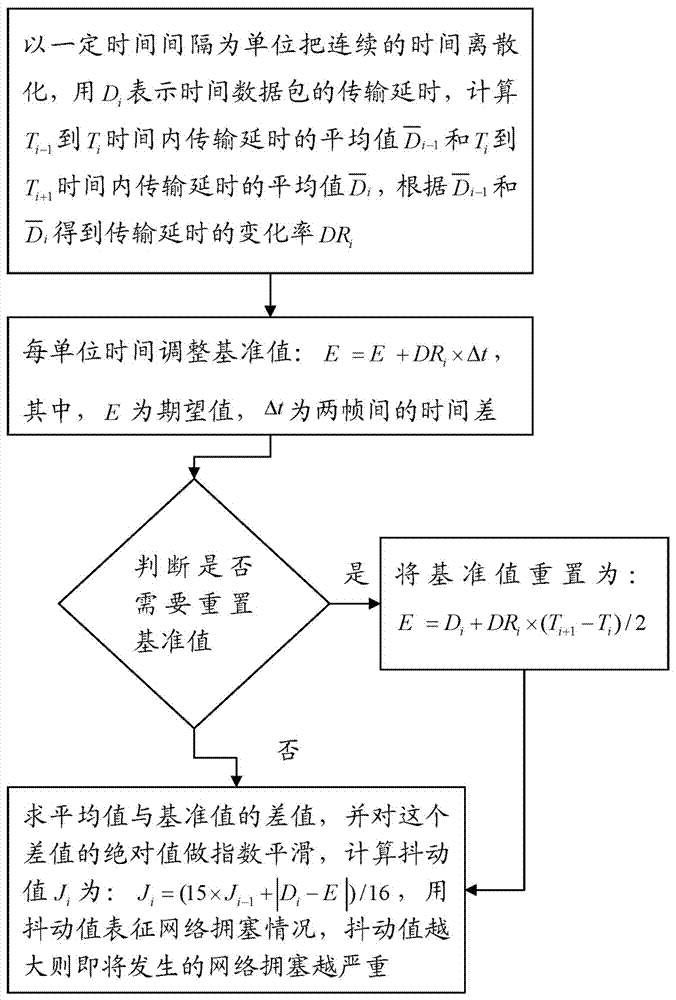A Method of Responding to Network Congestion Based on Network Jitter Algorithm
A technology of network congestion and jitter algorithm, applied in the field of network transmission, can solve problems such as inability to timely and accurately feedback network conditions, inability to timely and obvious network congestion, inability to respond sensitively to network jitter, etc., to reduce packet loss rate and enhance robustness performance and avoid packet loss
- Summary
- Abstract
- Description
- Claims
- Application Information
AI Technical Summary
Problems solved by technology
Method used
Image
Examples
Embodiment Construction
[0028] Please refer to figure 1 with figure 2 , a method for reflecting network congestion based on a network jitter algorithm, the method characterizes the jitter value by calculating the difference between the transmission delay of the data packet and the reference value, and then predicts the network congestion situation through the jitter value, the reference value For the expected value of transmission delay within a set time, the method includes the following steps:
[0029] Step 10, discretize the continuous time with a time interval as the unit, and use the frame as the discretized time unit in the video application, T i to T i+1 A total of 20 frames in the time interval, use D i Indicates the transmission delay of the data packet, the transmission delay D i The calculation formula is: D i =(R i -S i ), where R i is the receiving time in timestamp units when the receiving end receives the RTP packet, S i The RTP packet comes with a timestamp, indicating the s...
PUM
 Login to View More
Login to View More Abstract
Description
Claims
Application Information
 Login to View More
Login to View More - R&D
- Intellectual Property
- Life Sciences
- Materials
- Tech Scout
- Unparalleled Data Quality
- Higher Quality Content
- 60% Fewer Hallucinations
Browse by: Latest US Patents, China's latest patents, Technical Efficacy Thesaurus, Application Domain, Technology Topic, Popular Technical Reports.
© 2025 PatSnap. All rights reserved.Legal|Privacy policy|Modern Slavery Act Transparency Statement|Sitemap|About US| Contact US: help@patsnap.com



